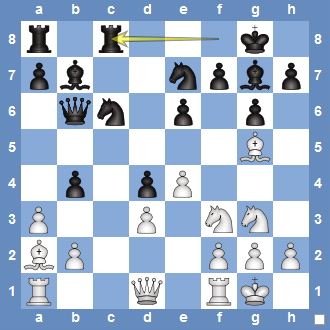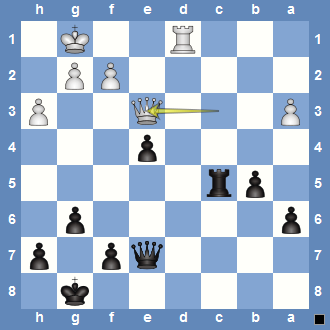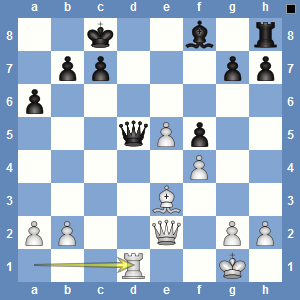I was in a strange mood yesterday. The chess exam book (see previous blog entry) has shown me all my weak areas and I was eager to do something to correct them. The scheduledTeam4545League game came at a bad moment. Even worse, our team captain has lost his game and I needed to win to tie the match.
My opponent was Manders, from his previous games I could see that he would play the Petroff or the French. As preparation I quickly reviewed the first moves of my opening repertoire and I looked at Signalman’s game against him.
Let’s start! You can replay the whole game here.
As expected it was indeed a French game but for whatever reason I couldn’t exactly remember the moves anymore. The first 5 moves were right, then I played 6. Ng3.
This gives Black a permanent space advantage. The correct move was 6. cxd4.
The game went on and suddenly Black started to attack on the queen side:
9…b5. What a nasty move. If White captures he will lose the bishop to Qa5+, Qxb5. Slowly my position turned into a positional mess. The pawn on d3 is a great target and when it falls Black’s bishop on g7 will become a monster.
The next critical moment came after move 12:
What should White play? My plan was to play a3, b4 to take away the squares from Black’s knight. This will seriously weaken the light squares but I calculated that my light bishop will be able to defend them. Paul mentioned after the game that he doesn’t like the plan. Weakening the c3 square is really bad and I should have done something else, maybe 13. a4 or the calm Rc1, slowly improving my pieces.
The good thing was that I had a plan, a real plan. 14. Ba2 was bad though as it allowed the strong 14…b4. I forgot to think about the moves that my opponent can do.
Position after 15… Rc8
The tension increases. Black has a lot of pressure on the queen side while 3 of my minor pieces are hanging around on the king side! There wasn’t much I could do here. b4-b3 would have trapped my light bishop permanently so it wasn’t too difficult to find 16. Bc4. I didn’t like axb4 as proposed by Paul. The b-pawn would quickly become a liability and I saw no easy way how to defend it.
Position after 18…Qa6
What to do? After dismissing axb4 earlier, I reconsidered it now or as response to 19. Bxb4 Nxb4 20. axb4. I still didn’t like it, I need to evaluate the position more deeply to understand what is better here. I had to protect the pawn on d3 at all costs so the queen could go to b3 or e2. After 19. Qb3 I feared Na5, however, this would simply lose the b4 pawn! I didn’t saw it during the game, I should have calculated the variation to the end. Instead I played 19. Qe2, cramping my position even more. My knight on g3 had nothing to do and no chance to enter the game soon.
The game continued 19…bxa3 and I continued with the really bad 20. bxa3. Again, this was my fear to not be left with a pawn on the b-file. 20. Rxa3 was called for, challenging Black a little bit. So far my defensive play allowed him to force his plans on me.
Position after 22…Rb3
Paul mentioned that I was positionally lost. I will lose the a-pawn, Black will get a passed a-pawn and has access to the open b+c file. Well, to have any chance at all I had to protect the d3 pawn and to prepare some counter play. How to do this? 23. Ne1. The knight looks so bad on e1 but it allows me to play f4 soon and to start an attack on the king side.
Position after 26. f5
Black stumbles! Instead of 25. gxf4 he played 25…Kh7 which allowed the strong 26. f5. Suddenly four pieces are pointing to Black’s king, potentially allowing some kind of mate attack or a nasty pawn fork after f6. The game continued with 26. Ng8 and I played 27. Qg4 with a discovered attack at the rook on c8. I didn’t expect that my opponent misses it, my plan was to simply increase the pressure and open the f-file for the rook. Calm defense with Rc7 would have saved the day, instead Black played 27…a5?? and after 28. fxg6 fxg6 29. Qxc8 Nce7 he gave up.
Conclusion: The best position is worth nothing if you give your opponent counter play. It’s easy to blunder in a tactical position, even with enough time on the clock. I need to check the evaluation of the position if White is left with an isolated b-pawn. While trying to avoid it I played 2 bad moves that turned the game from equal to better for Black. Another lesson is that I should have turned to the king side much earlier. This would have forced Black to spread his forces.
I have planned not to play in round 4 but my captain put me at board 2 and I am paired against Salvatore. Black again, this time against 1. d4 – sounds like fun!

















